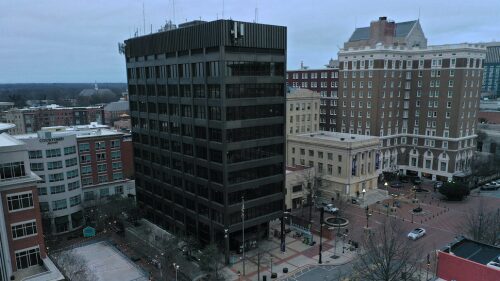You may have never noticed Richland Cemetery tucked away off East Stone Avenue, but this six-acre resting place has special significance for the Black community in Greenville. Over 130 years ago in 1884, Black Greenvillians appealed to City Council for a memorial spot of their own, and the City of Greenville established this private cemetery, one of the first Black cemeteries in the city.
During the era of slavery, enslaved people were buried alongside their master’s family or in a separate, often undocumented, section of the cemetery. Because of this, there are hundreds of graves of enslaved people in Greenville’s Springwood Cemetery. After slavery was abolished, many churches did not allow Black people to worship or bury their dead with white people.
The land for Richland Cemetery, named after nearby Richland Creek — a branch of the Reedy River, was deeded to the City of Greenville by Miss Elizabeth and Emmala Jones, matrons at the Anne Cigar Company. By the 1940s, all plots in the cemetery had been purchased, but not all of the plots were used, and some of the plots contained graves but no tombstones. After purchasing a plot, families were given deeds to identify their relatives’ location in the cemetery, but over the years, many deeds have been lost or forgotten, and a fire at the sexton’s house several decades ago further exacerbated the struggle to identify lots.
Today, the cemetery includes 1,400+ documented grave sites — some of which date back to the 1800s — including those of some of Greenville’s most influential Black residents. The cemetery also has several landscape features, cultural artifacts, like seashells, vases, and iron pipes typical of West African burial traditions, and works of funerary art that distinguish it as a traditional Black cemetery, and it was listed on the National Register of Historic Places in 2005. Richland cemetery can also be found in The Green Book of South Carolina, along with 10 other sites in Greenville and almost 400 others across the Palmetto State.
Five renowned Black Greenvillians buried at Richland Cemetery
🏗️ William Sewell was an entrepreneur + the first Black licensed building contractor. He designed and constructed Sterling High School and S.C. Franks Mortuary.
🩺 Cora Chapman was born in 1887 and grew up in Greenville. She studied nursing at Hampton Institute in Virginia and was later the City of Greenville’s first Black registered nurse and the first Black superintendent of the Greenville Hospital System.
📪 Elias Holloway was Greenville’s first Black letter carrier, and today he is recognized as one of the earliest supporters of a park in West Greenville — an inspiration for the city’s Unity Park that is currently under construction. Holloway proposed his idea for a West Greenville park to City Council in June 1939 with a petition signed by 376 people.
💈 Emma Clark was a Black, female entrepreneur who owned and operated Broadway Beauty Shop — one of the first Black beauty parlors in Greenville — for over 40 years.
🍎 Hattie Logan Duckett founded the Phillis Wheatley Center (still in operation today) in 1920 to provide young women with athletic, educational, and social programs. At the time, Hattie was only 23 years old. Hattie Duckett Elementary School, now the Fine Arts Center, was named in her honor.












